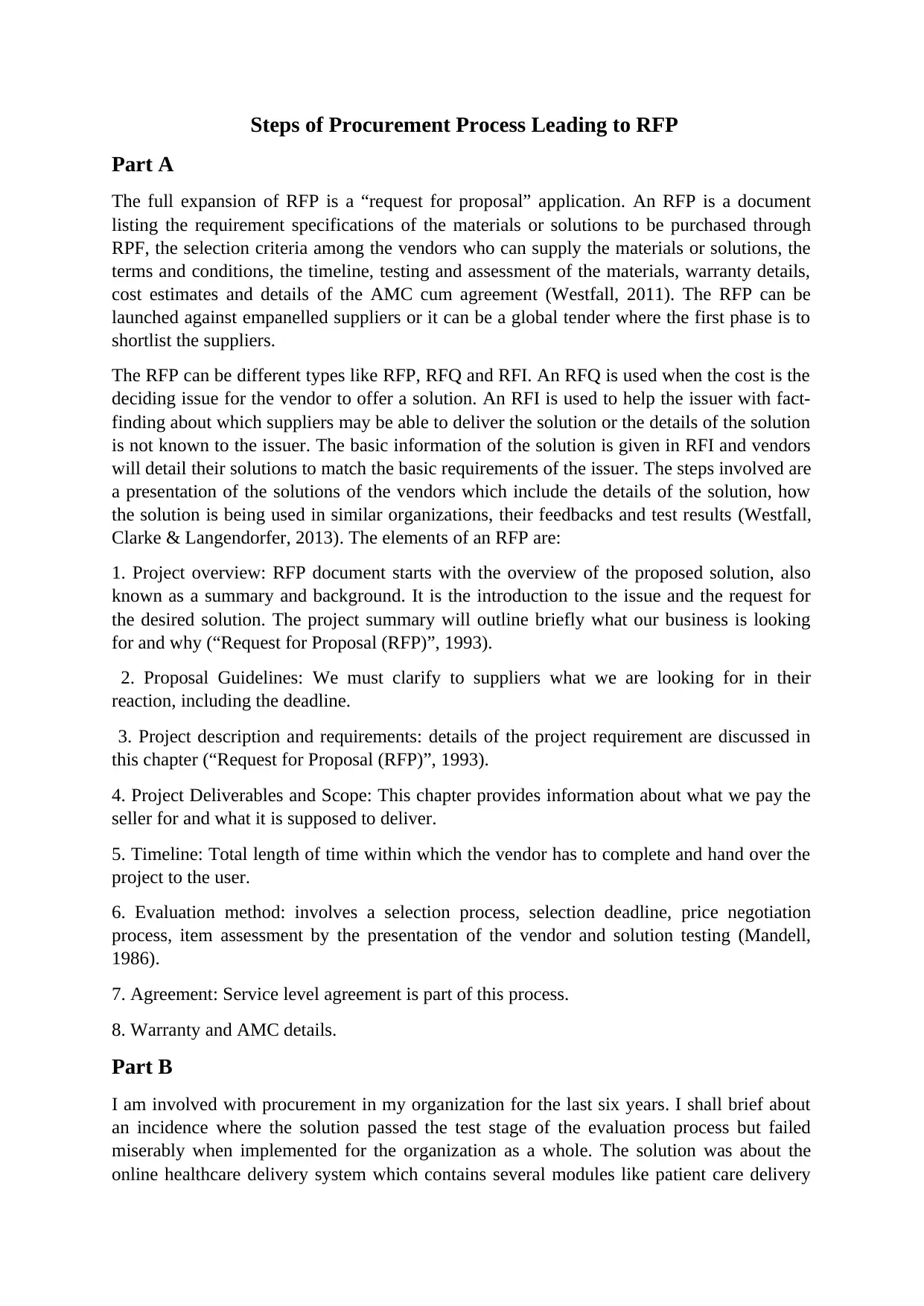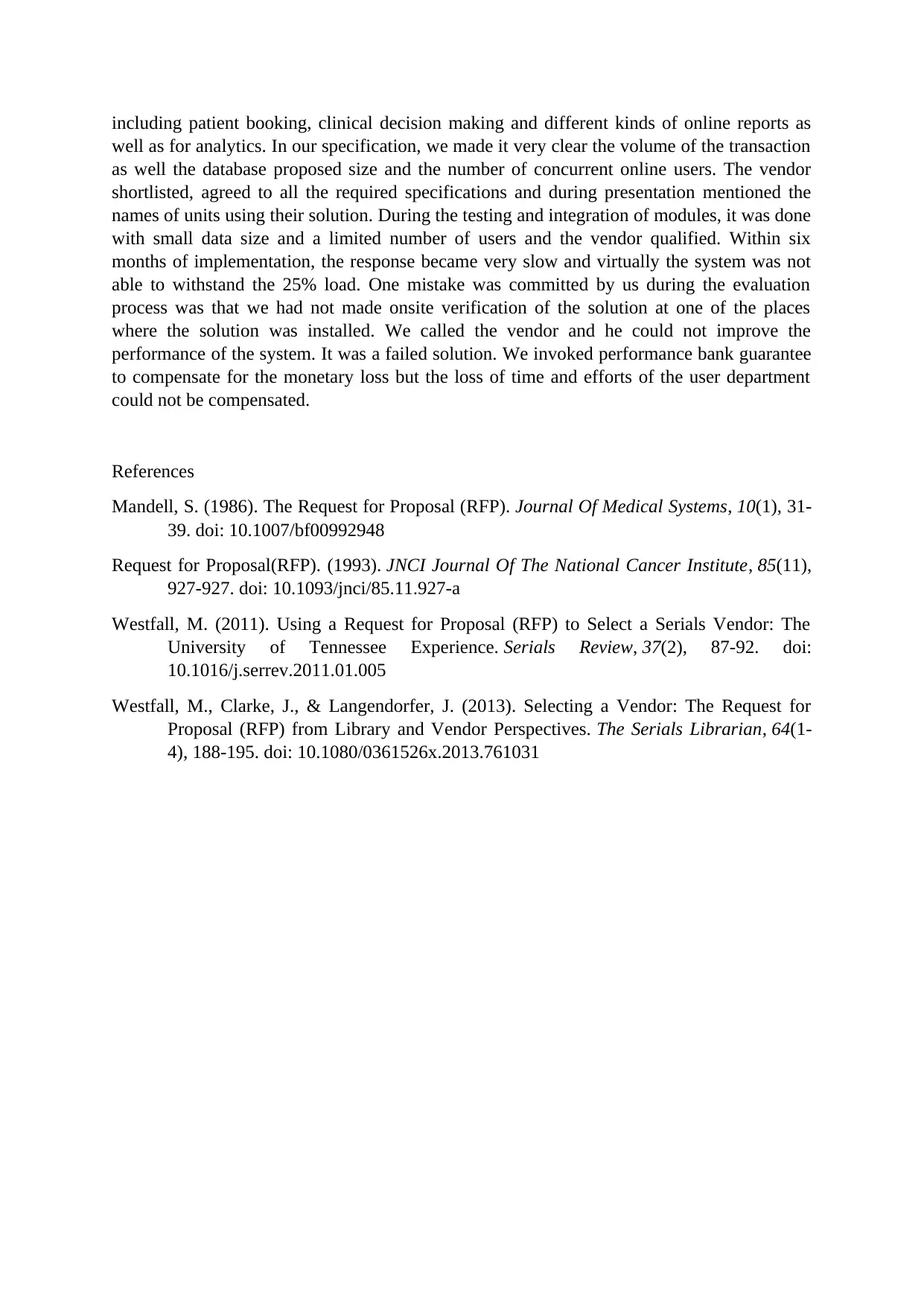Procurement Process: Request for Proposal, Challenges, and Solutions
VerifiedAdded on 2023/01/11
|2
|886
|59
Report
AI Summary
This report analyzes the procurement process, specifically focusing on the Request for Proposal (RFP). Part A defines RFP, its elements including project overview, proposal guidelines, project description, deliverables, timeline, evaluation methods, agreement, and warranty details. It also differentiates between RFP, RFQ, and RFI. Part B provides a case study from the author's experience, detailing a failed implementation of an online healthcare delivery system due to inadequate testing and onsite verification of the vendor's solution, highlighting the importance of thorough evaluation and due diligence in the procurement process. The report emphasizes the consequences of not properly assessing vendor capabilities, leading to performance issues and financial losses, while the loss of time and effort of the user department could not be compensated.
1 out of 2






![[object Object]](/_next/static/media/star-bottom.7253800d.svg)